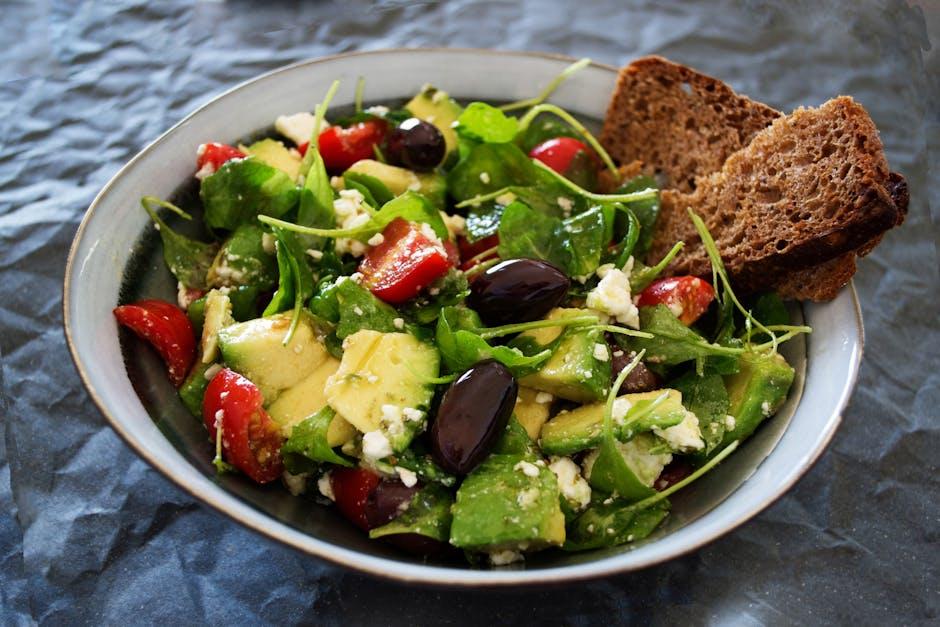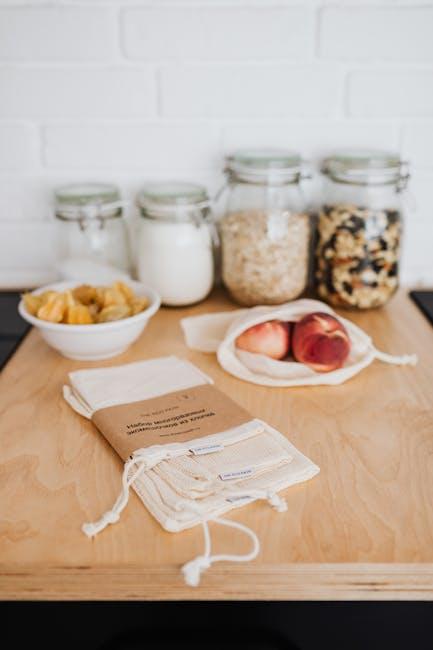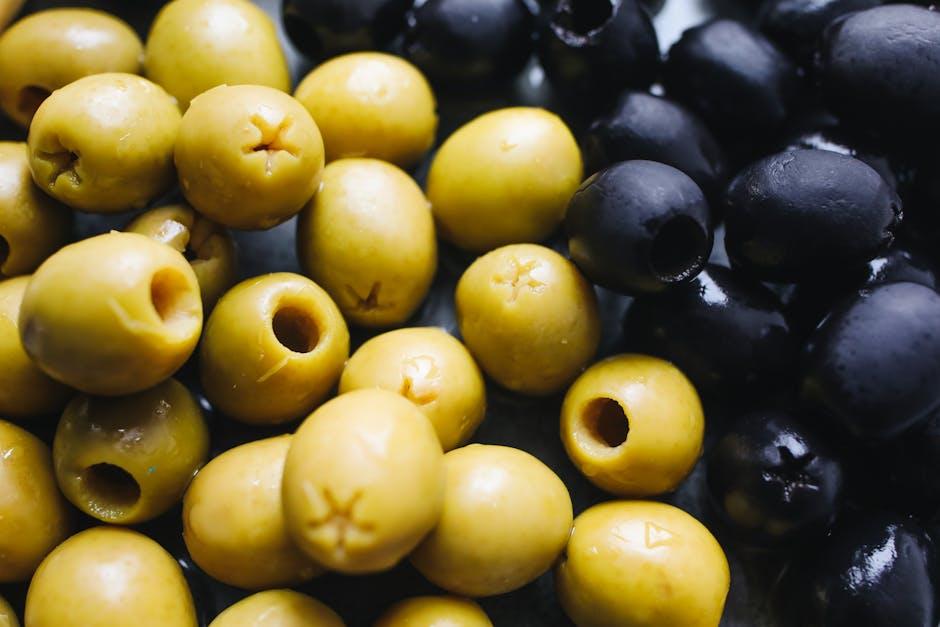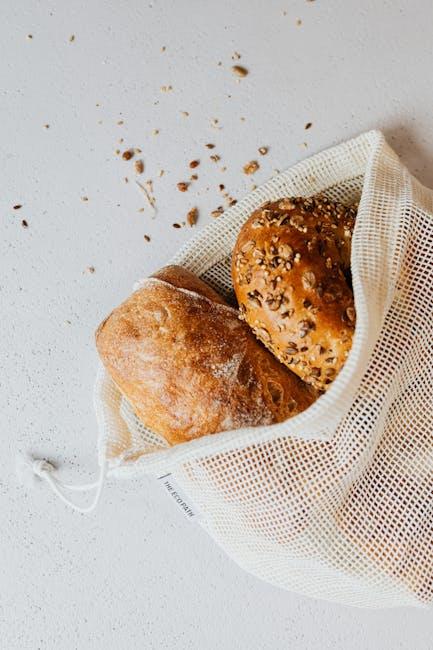In a world where the humble slice of bread has long been a staple on our tables, the rise of low-carb diets has sparked a quiet revolution in the way we think about this beloved carbohydrate. For those seeking to reduce their carb intake without sacrificing the comfort of a sandwich or the joy of toast, low-carb bread alternatives offer a compelling solution. These innovative creations challenge the traditional notion of bread, blending nutrition science with culinary creativity to deliver options that satisfy both taste buds and dietary goals. Journey with us as we explore the fascinating landscape of low-carb bread alternatives—where texture, flavor, and health converge in unexpected and delicious ways.
Table of Contents
- Exploring the Benefits of Low-Carb Bread for a Healthier Lifestyle
- Key Ingredients That Make Low-Carb Bread Alternatives Unique
- Top Low-Carb Bread Options for Different Dietary Preferences
- Tips for Baking Your Own Low-Carb Bread at Home
- How to Incorporate Low-Carb Bread Alternatives into Everyday Meals
- Q&A
- To Conclude

Exploring the Benefits of Low-Carb Bread for a Healthier Lifestyle
Choosing low-carb bread alternatives can be a transformative decision for anyone aiming to maintain stable blood sugar levels and promote overall wellness. These breads often utilize ingredients like almond flour, coconut flour, or flaxseed meal, which are naturally low in carbohydrates but rich in fiber and healthy fats. Incorporating such options into your meals can help reduce cravings and boost satiety, making it easier to adhere to a balanced diet without feeling deprived. Moreover, many low-carb breads are free from gluten, appealing to those with sensitivities or looking to reduce inflammation.
Benefits at a glance:
- Supports weight management by minimizing insulin spikes
- Enhances digestive health due to higher fiber content
- Provides sustained energy with fewer carb-induced crashes
- Encourages nutrient-dense eating habits
| Bread Type | Carbs per Slice | Key Nutrients |
|---|---|---|
| Almond Flour Bread | 2g | Healthy fats, Vitamin E |
| Coconut Flour Bread | 3g | Fiber, Medium-chain triglycerides (MCTs) |
| Flaxseed Bread | 1.5g | Omega-3s, Lignans |

Key Ingredients That Make Low-Carb Bread Alternatives Unique
What sets low-carb bread alternatives apart lies in their innovative use of non-traditional flours and wholesome binders rather than the classic wheat-based ingredients. Almond flour, coconut flour, and flaxseed meal are frequently hero ingredients, each bringing not only reduced carbohydrate content but also unique textures and flavors. These flours are rich in fiber and protein, helping to create a satisfying bite without the carb-heavy impact. Additionally, ingredients like psyllium husk or chia seeds are often employed for their excellent moisture retention and binding properties, mimicking the softness and structure of traditional bread.
Another key factor is the strategic inclusion of healthy fats and natural leavening agents that enhance taste and rise. Coconut oil, olive oil, or butter infuse these breads with essential fats that contribute to satiety and mouthfeel. Meanwhile, baking powder, baking soda, and vinegar work in harmony to produce a light, airy crumb despite the low-carb nature. Together, these components innovate the way bread functions, making each bite flavorful, textured, and aligned with health-conscious goals.
| Ingredient | Primary Role | Benefit |
|---|---|---|
| Almond Flour | Base Flour | High protein & fiber, nutty flavor |
| Psyllium Husk | Binder | Improves texture & moisture retention |
| Coconut Oil | Fat Source | Adds richness & satiety |
| Baking Powder | Leavening | Creates lightness |

Top Low-Carb Bread Options for Different Dietary Preferences
Exploring bread alternatives doesn’t mean you have to compromise on taste or texture. For those following keto or paleo diets, almond or coconut flour-based breads offer a satisfying, grain-free experience that’s naturally low in carbohydrates. If you prefer plant-based or vegan options, breads made from flaxseeds or chia seeds provide a hearty crunch and are loaded with fiber and omega-3s. Meanwhile, gluten-sensitive eaters can enjoy breads crafted from cassava or sorghum flour, which not only keep carb counts low but also bring unique flavors to your sandwich or toast.
Here’s a glimpse of popular choices tailored to various preferences:
- Almond Flour Bread: Rich and nutty, great for keto lovers.
- Coconut Flour Bread: Slightly sweet with a tender crumb, ideal for paleo followers.
- Flaxseed Bread: Dense and fiber-packed, perfect for vegan and low-carb diets.
- Chia Seed Bread: Moist and nutrient-rich, suits those seeking superfood benefits.
- Cauliflower Bread: Light and fluffy, a great grain-free, low-calorie alternative.
| Bread Type | Dietary Fit | Carbs per Slice | Flavor Profile |
|---|---|---|---|
| Almond Flour | Keto, Paleo | 2g | Nutty, rich |
| Coconut Flour | Paleo, Low-Carb | 3g | Sweet, tender |
| Flaxseed | Vegan, Low-Carb | 1.5g | Earthy, dense |
| Chia Seed | Vegan, Low-Carb | 2g | Moist, nutty |

Tips for Baking Your Own Low-Carb Bread at Home
Mastering the art of low-carb bread baking means striking a balance between texture and flavor without relying on traditional wheat flour. Start by experimenting with alternative flours like almond, coconut, or flaxseed meal, which offer unique tastes and nutritional benefits. Moisture retention is crucial, so don’t skip ingredients like eggs, Greek yogurt, or cheese to keep your bread soft and tender. Remember, low-carb flours behave differently—try combining them to achieve the perfect crumb and avoid dryness.
Temperature and timing play key roles in ensuring your bread rises and bakes evenly. Often, low-carb doughs benefit from a slightly lower baking temperature but a longer bake time to prevent burning the exterior while warming the middle thoroughly. To keep your loaves from turning dense, incorporate eggs or an egg white foam for extra lift. Here’s a quick guide to common low-carb flours and their baking characteristics:
| Flour Type | Texture | Best Use |
|---|---|---|
| Almond Flour | Moist, dense | Quick breads, muffins |
| Coconut Flour | Dry, absorbent | Light breads, thickening |
| Flaxseed Meal | Nutty, dense | Adds fiber, egg substitute |
- Combine flours to balance moisture and texture.
- Use binders like psyllium husk or chia seeds for structure.
- Monitor oven temperature carefully to avoid burning.
- Allow dough to rest before baking to improve texture.

How to Incorporate Low-Carb Bread Alternatives into Everyday Meals
Integrating low-carb bread alternatives into your daily meals can be both delightful and nutritious. Start by swapping traditional sandwich bread with options like almond flour wraps or cloud bread to maintain your favorite lunch combos without the carb overload. For breakfast, try using coconut flour-based English muffins or flaxseed crackers topped with avocado and eggs to create a satisfying, energy-boosting start to the day. Experiment with these simple swaps:
- Cauliflower toast as a base for open-faced sandwiches
- Portobello mushrooms or lettuce wraps for burgers and wraps
- Zucchini or cucumber slices for mini subs or finger foods
When planning meals, keeping a visual guide can help streamline your choices and ensure variety. Below is a quick-reference table featuring common meal types and their low-carb bread alternative suggestions:
| Meal Type | Low-Carb Substitute | Serving Ideas |
|---|---|---|
| Breakfast | Almond flour English muffins | With smoked salmon & cream cheese |
| Lunch | Cloud bread | Turkey, lettuce, tomato stack |
| Dinner | Grilled Portobello Mushrooms | As burger buns with avocado |
| Snacks | Flaxseed crackers | Hummus or cheese dips |
Q&A
Q&A: Low-Carb Bread Alternatives
Q1: Why are people looking for low-carb bread alternatives?
A: Many individuals follow low-carb or ketogenic diets to manage weight, control blood sugar, or improve metabolic health. Traditional bread, often made from refined wheat flour, is high in carbohydrates, which can disrupt these goals. Low-carb bread alternatives offer similar textures and uses without the carb overload.
Q2: What are some common ingredients in low-carb bread alternatives?
A: Typical low-carb breads use ingredients like almond flour, coconut flour, flaxseed meal, and psyllium husk. These components are rich in fiber and healthy fats, providing structure and moisture without excessive carbs.
Q3: Do low-carb bread alternatives taste like regular bread?
A: They can, but there are subtle differences. Some may have a nuttier or denser texture, while others might be slightly more crumbly. With practice and the right recipe, many people find these alternatives delicious and satisfying.
Q4: Can low-carb bread be used in all the same ways as regular bread?
A: Generally, yes. You can use low-carb bread for sandwiches, toast, or dipping, though it may not always rise like traditional bread due to the absence of gluten. Some varieties are better suited for toasting or open-faced sandwiches.
Q5: Are there any nutritional benefits besides reduced carbs?
A: Absolutely. Many low-carb breads come packed with fiber, protein, and healthy fats. Ingredients like seeds and nuts add vitamins, minerals, and antioxidants, making them a wholesome choice.
Q6: Where can I find low-carb bread alternatives?
A: These breads are increasingly available at grocery stores, health food shops, and online. Alternatively, many recipes exist for baking your own at home, providing control over ingredients and flavor.
Q7: Is low-carb bread suitable for everyone?
A: While great for those limiting carbs, they may not be ideal for everyone. People with nut allergies or sensitivities to certain fiber sources should check ingredients carefully. As with any dietary change, consulting a healthcare professional is wise.
Q8: What’s the best way to store low-carb bread?
A: Due to the absence of preservatives, it’s best stored in the refrigerator and consumed within a few days or frozen for longer shelf life. Toasting can help revive texture if it becomes too dense after refrigeration.
This Q&A offers a creative yet balanced insight into the world of low-carb bread alternatives, helping readers navigate their options with clarity and curiosity.
To Conclude
In the ever-evolving landscape of mindful eating, low-carb bread alternatives offer a fresh take on a timeless staple. Whether crafted from nut flours, seeds, or vegetables, these options invite those seeking to reduce carbs without sacrificing comfort. As you explore the diverse textures and flavors, remember that the best bread is the one that fits your lifestyle and satisfies your palate. Embracing these alternatives is less about restriction and more about rediscovery—where innovation meets tradition on every mindful bite.














Leave feedback about this